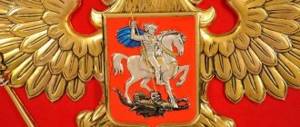History of the Maslenitsa holiday in Rus'
You can tell preschoolers about Maslenitsa already in the middle group. The teacher tells older preschoolers new details, deepening the concept of the holiday.
As you know, Maslenitsa is an ancient Slavic holiday that arose in the distant times of paganism and survived after Russia adopted Christianity. However, at the age of 4–5, many children still find it difficult to comprehend the concepts of “paganism” and “Christianity,” especially since not all children are raised by their parents in Orthodox traditions. Therefore, at this age, it is better for the teacher to note that Maslenitsa is one of the most joyful and bright holidays in Rus', which has been celebrated for a very long time. This is a cheerful farewell to winter, anticipation of the spring sun, the long-awaited renewal of nature.
At first, you can simply tell the kids that Maslenitsa is a cheerful farewell to winter, the joy of the upcoming meeting with spring
In the older group, you can clarify that before the Orthodox holiday of Easter (it is always discussed in kindergarten, the children do crafts) Great Lent takes place, when people limit themselves in food. The last week before Lent is called Maslenitsa. At this time, you are allowed to eat many foods, including butter (which is where the name came from).
The holiday itself came from those distant times, when the ancient Slavs (our ancestors) worshiped the gods - the Sun, Wind, Rain, etc. It should be explained to older preschoolers that this period was called paganism.
In older preschool age, children need to be told that Maslenitsa week precedes the Great Orthodox Lent before Easter
You can tell the guys one more interpretation of the name of the holiday. It is connected with an ancient legend. In the far North there lived a girl named Maslenitsa, the daughter of Frost and Snowstorm. One day people wandered into these places and were swept away by a snow storm. The Maslenitsa girl helped them get out, and then suddenly turned into an adult, rosy-cheeked woman and fed the guests pancakes, and also amused them with her songs and dances. People had fun for a whole week.
Maslenitsa in Rus' has always been celebrated on a grand scale - hence the stable definition of the holiday “Broad Maslenitsa”. Russian people sang, danced to cheerful jokes, ditties, and danced in circles. The jesters and buffoons made everyone laugh until they cried. There were endless performances in street theaters and booths. Masquerades were held right on the street.
Maslenitsa in Rus' has always been celebrated on a grand scale - with songs and dances, with buffoons, masquerades, street booths
The main festivities began on Thursday and continued until Sunday (at the beginning of Maslenitsa week, people prepared treats for the holiday). Young people rode sleds down hills, played burners, blind man's buff and other winter fun, there were fist fights and tug-of-war competitions, and snowball fights. Adults and children built snow forts and staged entire performances: one team attacked buildings, captured them, and the other defended them.
A traditional pastime was trying to climb a high ice pillar. It was specially doused with cold water, and valuable gifts were hung on the icy surface at a certain distance from each other. The winner was the daredevil who managed to climb to the very top.
Many gaming traditions have survived to this day. Nowadays, traditionally, festivities are held in the squares of all cities and towns - farewell to winter. This happens on Sunday - the last day of Maslenitsa week. The people are offered various fun and competitions - only men climb not on an ice pillar, but on a regular one.
Today, like many centuries ago, people have fun on Maslenitsa, organize various games and entertainments
Video: fight on a log with bags on Maslenitsa
Children should definitely be shown reproductions of paintings by famous Russian artists dedicated to Maslenitsa. Thus, Yu. Kustodiev repeatedly addressed this topic (in 1916, 1919, 1920), wonderful works were created by V. Surikov, K. Makovsky, P. Gruzinsky, S. Kozhin. Many modern painters are interested in this topic.
Photo gallery: the theme of Maslenitsa in paintings by Russian artists
Kustodiev painted his first painting called “Maslenitsa” in 1916
The people continued to celebrate Maslenitsa even during the civil war - the holiday transported them to a world of warmth and light
Folk festivities take place against the backdrop of a beautifully towering temple
In his painting “The Capture of a Snow Town” Surikov depicts the traditional Maslenitsa fun - the capture of a snow fortress
The theme of Maslenitsa also attracts many modern painters.
Makovsky captured folk festivities in St. Petersburg in the 19th century
The artist managed to convey the scope of folk festivities in the village
Artists depicted Maslenitsa already in the 17th century
Video: paintings by Russian artists on the theme of Maslenitsa (video presentation)
Maslenitsa in folklore
Naturally, such a colorful holiday as Maslenitsa is reflected in Russian folklore. People came up with many proverbs, sayings, riddles, and jokes on this topic. The teacher should give the children several striking examples.
Proverbs (the meaning of the proverb must be explained):
- It’s not all about Maslenitsa, there will be Lent too.
- Not life, but Maslenitsa.
- Maslenitsa is afraid of bitter radishes and steamed turnips.
- Pancakes, pancakes, pancakes, like the wheels of spring.
- They don't like pancakes and kisses.
- Maslenitsa - go around, save money.
- Maslenitsa does not last forever.
Maslenitsa songs:
- Maslenitsa has arrived! Madam-Boyarina Maslenitsa! With cheese, butter, and pancake, And rosy pie!
- Hello, annual Maslenitsa, our dear guest! Come on black horses, On painted sleighs, So that the servants will be young, They will bring us expensive gifts, And pancakes, and kalachi Swords through our window!
Ditties and songs at Maslenitsa are usually sung by mummers
- And we saw off Maslenitsa, sighed heavily for it; Oh, Maslenitsa, come back, cling to the white birch tree, reach out to the red summer. And we spent Maslenitsa, lost our dear one, We thought she would be seven years old, But she stayed for seven days. Oh, Maslenitsa, come back! Show up in the new year!
Puzzles:
- Adults and children love it, with or without filling, everyone wants to eat it, it’s round, crispy, shiny from the butter. (Crap).
- My holiday Only once a year, I will come to you for a week, I will bring joy to everyone and treat you to pancakes. (Maslenitsa).
- On Holy Sunday, we all have to ask everyone for forgiveness and answer: ... (“God will forgive!”).
- We welcome our dear guests and treat them to sweet tea. An old copper one is steaming on the table... (Samovar).
Class hour "Maslenitsa" class hour on the topic
Ministry of Education and Science of the Amur Region
State Professional Educational Autonomous Institution "Raichikhinsky Industrial College"
Open class hour
"Maslenitsa"
| Developers: | master p/o Burlakova N.V. master p/o Yakushkina T.V. |
Raichikhinsk
2018
Goals:
Introduce the history of the holiday, traditions and rituals of Maslenitsa celebration.
Reviving and maintaining students’ interest and respect for Russian culture, ritual folk holidays, traditions, and customs.
-contribute to: instilling interest in Russian folk culture; development of communicative and creative abilities of students.
- fostering a caring and respectful attitude towards parents, classmates, and surrounding people.
Tasks:
To introduce the Maslenitsa holiday, to give students an idea of folk traditions and rituals, to identify the connection between the life of the Russian people “with the singing word” (Maslenitsa songs);
Develop the emotional-volitional sphere, creative and mental abilities, evoke positive emotions and a festive mood;
Cultivate an interest in the history of your people, a desire to maintain ancient traditions, a love of Russian culture, folk music, games
The abstract contains:
- pancakes are baked in advance,
- dress up in Russian folk costumes,
- the board is decorated with small pancakes “sun-pancake”, on the table sits a “Maslenitsa doll”, there is a samovar - decorated with bagels with tea and dishes with pancakes and cookies.
Equipment and materials:
Laptop with speakers, music selection for round dances, dances, songs. competitions.
Progress of the event.
Two presenters come out.
1. Presenter.
All! All! All! All for the holiday! We welcome Maslenitsa! We are saying goodbye to winter! Let's call for spring!
2. Presenter.
Hurry up! Hurry up! Hurry up to grab the best seats!
- Leading.
If you don’t borrow it yourself, your neighbor will get it!
- Leading.
Come everyone without hesitation! No tickets needed - just show good mood!
- Leading.
Come, mash your bones! Today Maslenitsa invites you to visit!
- Leading
Hurry quickly, hurry quickly! There is no more joyful holiday for us!
1. Presenter
We have been waiting for guests for a long time - we are waiting! We won’t start Maslenitsa without you.
Together (in chorus): So, we begin Maslenitsa!
Guys, have you already guessed what topic the class will be on?
And what will we talk about today about Maslenitsa.
- Leading.
History of the holiday.
Maslenitsa is the most joyful and bright holiday that came to us from pagan Rus' and was preserved after the adoption of Christianity. In addition, Maslenitsa, as it may not be known to everyone, is a character in Slavic mythology. Maslenitsa embodies three characters at once: Fertility, Winter and Death.
- Leading.
Maslenitsa is also a farewell to a long Winter, an expectation of spring warmth, a renewal of nature. From time immemorial, people have perceived Spring as the beginning of a new life and revered the Sun, which gives life to all living things. Maslenitsa was loved by both the common people and the kings and boyars.
1. Presenter.
Now we will listen to what you know about Maslenitsa. (Students answer)
Why is the holiday called Maslenitsa?
Why is the pancake the symbol of Maslenitsa?
2. Presenter
The very name of the Maslenitsa holiday comes from the fact that on this day they ate a lot of oily foods.
- Leading.
Maslenitsa is celebrated in the last week before Lent, seven weeks before Easter. The main attribute of the holiday is, of course, pancakes. The beginning of Maslenitsa ranges from February 20 to February 26.
- Leading.
Maslenitsa week itself is not uniform: if in the first three days the peasants were still engaged in household work, then from Thursday it was forbidden to work, since Broad Maslenitsa began. Thus, Maslenitsa week consisted of two halves. The first three days are Narrow Maslenitsa, and the subsequent days are Wide Maslenitsa.
- Leading.
Of the many rules and recommendations that should be followed during the holiday, we can name the main ones. Firstly, you can no longer eat meat on Maslenitsa. Sunday before Maslenitsa is the last day when you can eat meat. That is why this day among the Russian people was called “Meat Conspiracy”. On Maslenitsa you can eat dairy products and fish and many, many pancakes. The second rule that should not be forgotten is that food on Maslenitsa becomes the most important form of life.
- Leading.
That is why people said that you should eat as many times as a dog wags its tail or as many times a crow caws. But the most important thing is the pancakes! Pancake is a symbol of the sun. Just as round and hot. Each day of Maslenitsa week has its own name and requires certain rituals.
- Leading
And now we are setting off on a festive journey to visit Maslenitsa. Here comes the first stop: Monday.
- Leading
Monday, the first day of Maslenitsa, is called the meeting. On Monday, rich people started baking pancakes. Poor people started baking only on Thursday or Friday... They never ate the first pancake on Monday, but left it for the souls of the departed, giving it to the poor so that they could pray for peace. On the same day, a scarecrow of Maslenitsa was made from straw.
- Leading.
He was dressed in women's clothing with an oil pancake or frying pan in his hands, impaled on a pole, rolled around with it, and then placed on a hill or elevated place. After lunch, everyone went to ride down the snowy mountains and sing songs:
- Leading.
Maslenitsa, Maslenitsa! We boast about you, we ride in the mountains, we overeat on pancakes!
- Leading.
We will have very interesting competitions today.
- Leading.
So the 1st competition is called: “Portrait of Maslenitsa”. 2 students are invited.
Competition task: (with your eyes closed, draw a portrait of Maslenitsa, show imagination and ingenuity).
Students sitting in the audience choose the most beautiful Maslenitsa portrait.
- Leading.
The “silhouette” of this outfit was recognized as the best.
And damn it to the winner.
- Leading.
Monday passes, but our holiday journey continues. Here is the second day of Maslenitsa - Tuesday.
- Leading.
The second day of Maslenitsa is called flirting. This day was dedicated to the newlyweds. A week or two ago, weddings took place in the villages. Now these young families were invited to ride down the mountain. All married couples, who recently had the whole village at their wedding, had to slide down the mountain, while calling on their relatives and friends: “We have mountains ready and pancakes baked - please welcome.”
- Leading.
Maslenitsa festivities began. In the old days, on Maslenitsa, people not only walked on this day, but also told fortunes. These days, young people were looking for brides, and girls were secretly looking at their betrothed. After fun games, boys and girls gathered at a common table.
- Leading.
And now the competition: “Guess the riddle!” For each correct answer you receive tokens. Whoever has the most tokens will be the winner!
We know this holiday -
Time to see off winter. People these days should have fun and bake pancakes. Answer: (Maslenitsa.)
- Leading.
What do they pour into a frying pan and bend it four times? (Crap.)
- Leading.
What do pancakes (sun) mean?
- Leading.
What was Maslenitsa called in Ancient Rus'?
- Leading.
Name the treat for Maslenitsa (pancakes).
- Leading.
Good, good. He looks at people, But he doesn’t tell people to look at themselves. (Sun.)
- Leading.
How many days does Maslenitsa last? (7 days)
- Leading.
There is a hole at the top, a hole at the bottom, and in the middle there is fire and water. (Samovar.)
- Leading.
Round, not a ring, hot, not the sun. (Crap)
- Leading.
White, sedate is afraid of heat. Until you burn Maslenitsa, it won’t go anywhere. (Winter)
- Leading.
It comes after Maslenitsa: it does not have a sentry, but calls itself... (Lent)
- Leading.
Well done guys, you know everything!
- Leading.
The noise ceased, the cheerful Tuesday rang out - a flirtation. It's time to enjoy some pancakes. We will do this on the third day of Maslenitsa.
- Leading.
The third day of Maslenitsa is called gourmet. On the third day, sumptuous tables were laid in all houses. Numerous stalls opened right on the street, selling hot pancakes, sbitni (drinks made from water, honey and spices), roasted nuts, and honey gingerbread. On this day, the son-in-law (daughter’s husband) came to his “mother-in-law for pancakes.”
The competitions continue. 2 students are invited.
Now the pantomime competition is called “Frying Pan”
- Leading.
Tasks:
- depict a frying pancake.
- depict a bear waking up from hibernation.
- depict a rooster in love.
- depict the rising sun
Well done everyone, damn the winner!
- Leading.
Well, our journey continues. So Thursday is quietly rolling by.
This day was often called broad quarters, revelry, turning point. On this day, everyone gathered for the holiday. It was on this day that it was customary to organize fist fights, capture specially built snow forts, roller coaster rides, and fun carnivals. On this day, especially the villagers dressed up in whatever they wanted. According to an ancient custom, on this day in Rus' they baked larks, doves, and swallows from butter dough - the harbingers of Spring.
- Leading.
Day 5: Friday – mother-in-law’s supper
If on Wednesday sons-in-law went to their mothers-in-law, now it’s the other way around: mothers-in-law should come to visit. The son-in-law himself must treat his mother-in-law and father-in-law to pancakes.
The mother-in-law, invited by her son-in-law, strangely enough, sent her son-in-law everything that pancakes were made from and on: a tub for dough, frying pans, and the father-in-law a bag of flour and butter. This meeting symbolized honoring the wife's family.
For my dear son-in-law, I won’t spare pancakes, Come visit us again, Feel your mother-in-law’s love.
My mother-in-law forced me: Eat a mushroom pancake, But I haven’t lived long yet, I’m not ready to die!
- Leading.
On Saturday, at Sister-in-law’s gathering (sister-in-law is her husband’s sister), the young daughter-in-law invited her husband’s relatives to visit her. If the sister-in-law was unmarried, then she also called her unmarried friends. If on the contrary, then only married relatives were invited.
- Leading.
Now competition: “Pancake Eater”
Whoever eats the pancake the fastest is the winner.
- Leading.
Well, our journey is coming to an end. The last day of Maslenitsa is Forgiveness Sunday.
- Leading.
This is the last day of Maslenitsa. People call it Forgiveness Sunday, Tselovalnik.
On Sunday, everyone remembered that Great Lent would begin on Monday. On the last day of Maslenitsa, it is customary to ask for forgiveness from all relatives and friends, to which they answer: “God will forgive!” On this day, all insults and insults are forgiven. On this day they remember the dead, go to the cemetery, and leave pancakes there.
The culmination of Maslenitsa is considered to be the burning of an effigy, as a symbol of Winter, which was ending, and the onset of Spring.
- Leading.
Come on Sunday - We will ask for forgiveness, To remove all sins from the soul, With a pure heart, We will meet Lent!
- Leading.
Let's seal our friendship with a kiss, Even though we're not fighting. After all, on Maslenitsa you need to strengthen love and friendship!
- Leading.
Happy Maslenitsa, we congratulate you! The time has come for pancakes to reign. Winter farewell cannot be enjoyed without pancakes. We invite you to songs, jokes, and joy.
- Leading.
So we learned the history and rituals of Maslenitsa, thank you everyone for being so well prepared and listening carefully.
Dear guests and guys, help yourself to pancakes (students in the profession of a salesperson treat everyone to pancakes).
Why are pancakes baked on Maslenitsa?
Children will be interested to know that pancakes are considered the main symbol of Maslenitsa. In ancient times, they personified the sun - they were just as round, yellow and hot. People believed that together with the pancake they absorbed a particle of the sun's heat and power, which gives life and strength to all life on earth.
The people, yearning for warmth, used delicious pancakes to invite the sun, as if they were “buttering” it. This, by the way, is another interpretation of the origin of the name “Maslenitsa”.
Pancakes symbolized the sun - they were just as round, yellow and hot.
The hostesses baked a variety of pancakes: with butter and sour cream, honey and jam, with caviar and mushrooms, with sturgeon and stellate sturgeon - for every taste. Wheat or buckwheat flour was used. The most delicious pancakes are freshly baked, piping hot.
A variety of pancakes were baked for Maslenitsa - with butter, sour cream, jam, caviar, etc.
Interestingly, the pancakes baked at different lengths of Maslenitsa had their own names:
- on Monday - pancakes;
- on Tuesday - pancakes;
- on Wednesday - pancakes;
- on Thursday - pancakes;
- on Friday - blinks;
- on Saturday - pancakes;
- on Sunday - royal pancakes.
Rich people started baking pancakes on Monday, while poorer people started baking pancakes on Thursday or Friday. They ate this food from morning to evening, occasionally alternating with other dishes. On the street, pancakes could be purchased literally on every corner; they were served in taverns and restaurants. We washed down the Maslenitsa symbol with hot tea and milk. Sbiten, a Russian drink made from water and honey with spices, was also popular.
Of course, in kindergarten no one will allow the children to eat pancakes every day during Maslenitsa week. But so that preschoolers can become more deeply imbued with national traditions, the teacher can choose a day and ask their parents to bake and bring pancakes. As an option, you can conduct an applique class - cut out a pancake from paper and decorate it with a fantasy ornament (in the middle group you can distribute ready-made blanks in the form of circles).
To maintain the festive mood, on one of the days of Maslenitsa you can treat preschoolers with pancakes that their parents will bake
Songs for Maslenitsa
Happy Maslenitsa week. And it’s rich not only in games, but also in treats. Many songs are written about Maslenitsa, they lift your spirits and remind you of spring...
Oh, pancakes, pancakes, pancakes
(Russian folk song)
We haven’t eaten pancakes for a long time, We wanted pancakes,
Oh, pancakes, pancakes, pancakes, you are my pancakes. Oh, pancakes, pancakes, pancakes, you are my pancakes.
Our elder sister is a master at baking pancakes.
Oh, pancakes, pancakes, pancakes, you are my pancakes. Oh, pancakes, pancakes, pancakes, you are my pancakes.
She baked some food, there are probably five hundred.
Oh, pancakes, pancakes, pancakes, you are my pancakes. Oh, pancakes, pancakes, pancakes, you are my pancakes.
She puts it on the tray and carries it to the table herself.
Oh, pancakes, pancakes, pancakes, you are my pancakes. Oh, pancakes, pancakes, pancakes, you are my pancakes.
Guests, be healthy, my pancakes are ready.
Oh, pancakes, pancakes, pancakes, you are my pancakes. Oh, pancakes, pancakes, pancakes, you are my pancakes.
Maslenitsa
Music by: Trubachev
We greet Spring with crispy pancakes, we burn the effigy of Winter, we sing in a round dance.
Hello, dear Spring, We are neighbors with you. Hello, Red Spring, We greet you! Hello, Red Spring, We welcome you!
We will glorify Spring with fragrant pancakes. Everything in nature comes to life, the cunning sun blinks.
I'll warm you up more - A stream will run down the mountain. I will rise higher, Hello, Red Spring! I will rise higher, Hello, Red Spring!
Spring was called
Performed by "Wizards of the Courtyard".
He didn’t call for winter, the cold, he didn’t call, she came herself, Weaving her laces, sweeping them, chalking them. And we look from the window, And we are waiting for spring and the sun.
They called for spring, waited for summer, The river froze, houses under the snow. They called for spring, they waited for summer, It’s on the threshold, leave us, winter.
Winter, winter. Winter.
Let's go to round dances, we will call for spring, Drops are singing outside the window, Hello, sunny April. And we are waiting for spring, the magician, And we are building a staircase to heaven.
They called for spring, waited for summer, The river froze, houses under the snow. They called for spring, they waited for summer, It’s on the threshold, leave us, winter.
Winter, winter. Winter.
They called for spring, waited for summer, The river froze, houses under the snow. They called for spring, they waited for summer, It’s on the threshold, leave us, winter.
"The pancakes are good"
Author of poetry and music: Pavel Ermolaev Performed by: ensemble “Lel”
My girlfriend and I were invited to a fun holiday. We took part in quizzes and crossword puzzles. And when we got hungry, what did we see? How did your favorite pancakes appear on sale?
Chorus:
Pancakes, pancakes, good pancakes Pancakes, pancakes, nice pancakes Pancakes, pancakes, rosy pancakes With butter, honey and strawberries, and even with bananas.
I remembered this day with my girlfriend. Time flew by quickly, we were not bored. And we really liked everything about this holiday. Because they sold pancakes and butter.
Chorus.
We led round dances, played streams, accordionists played merrily for the people, everyone looked at the tables and clapped their hands, and when they finished playing, they devoured all the pancakes.
Chorus.
The role of the Maslenitsa doll in the holiday
Another symbol of Maslenitsa is a large stuffed doll, which was solemnly burned on Sunday. This was the climax of the holiday (as it is now) and symbolized the fact that winter had been defeated, was leaving, and spring was coming. Traditionally, funeral food was thrown into the fire - pancakes, flatbreads, eggs.
The burning of the Maslenitsa effigy was the culmination of folk festivities before and now
The doll was made of straw - human height or even larger, dressed in colored rags, a scarf was tied on its head, and bast shoes were put on its feet. She was depicted as a woman or an old woman (her prototype is the ancient Slavic goddess of winter and death Morena). The scarecrow had been installed on a pole and carried through the streets since Thursday: it was a whole Maslenitsa train with many horses, mummers galloping nearby with jokes and jokes.
They've been driving the stuffed Maslenitsa through the streets since Thursday - walking around
At the same time, in each house the owners made a small Maslenitsa doll. It, in turn, was not burned, but was kept for a whole year as a talisman that wards off evil spirits and other misfortunes. The doll was placed in front of the entrance to the hut or in the red corner (the main corner of the Slavic house, located diagonally from the stove). When the next Maslenitsa came, the doll was burned on a ritual fire or floated down the river.
All actions during the making of the doll were filled with meaning. So, people tried not to use needles and scissors; the fabric had to be torn rather than cut. Maslenitsa’s face remained white: this way she became inaccessible to the infusion of evil forces. The materials for making the amulet were straw and pumpkin, but there had to be a tree, which personified the violent power of nature. People hung ribbons on the doll’s hands while making wishes.
In kindergarten, children can also make such amulets dolls for themselves (of course, the children will not burn them, but will take them home). Preschoolers will surely enjoy this kind of creativity; they will be imbued with the holiday atmosphere. Depending on the age of the students, the teacher can offer them crafts of different complexity from different materials.
During a fine arts lesson, preschoolers will happily make themselves amulets dolls from various papers, fabrics and other materials.







